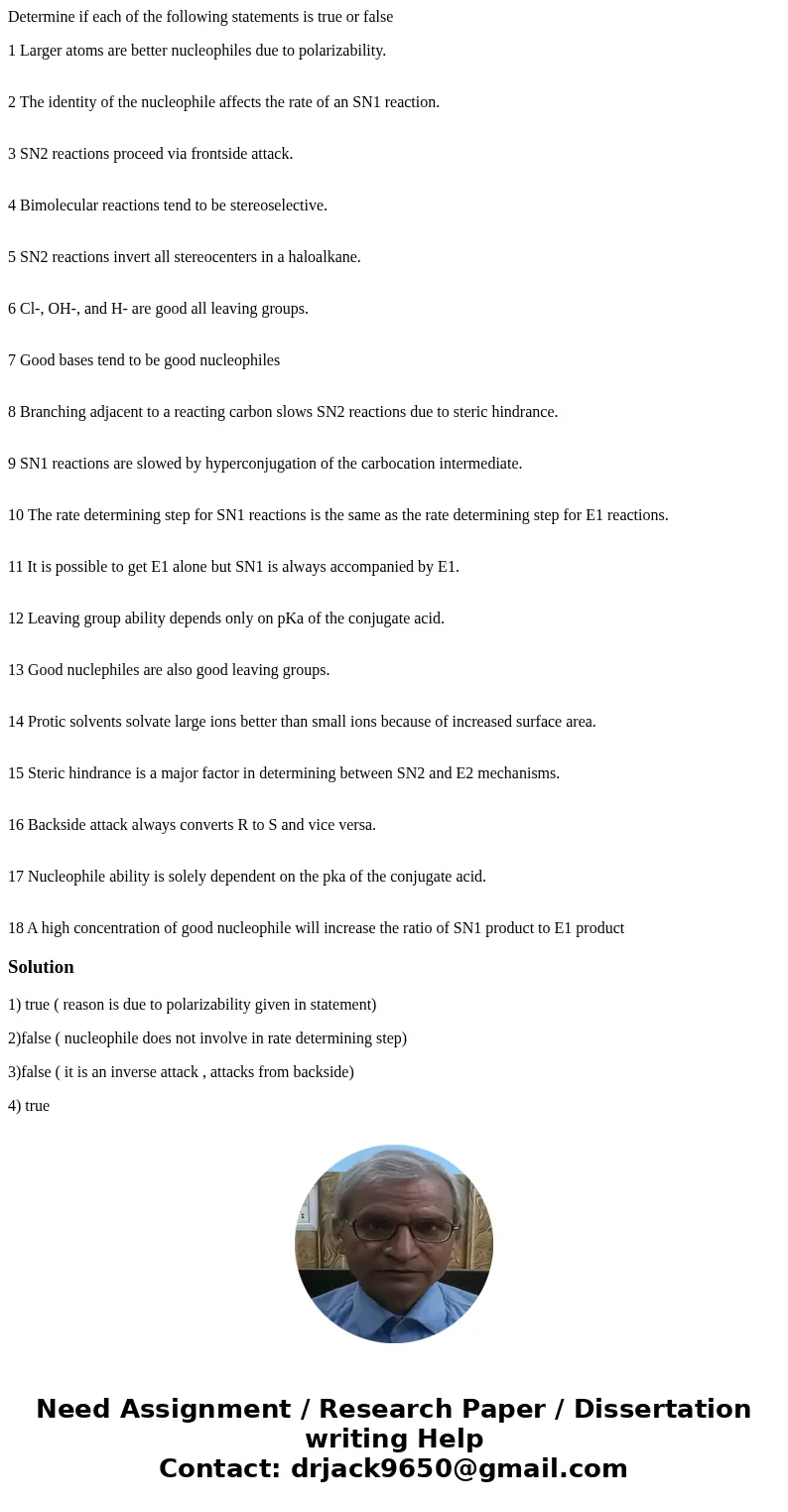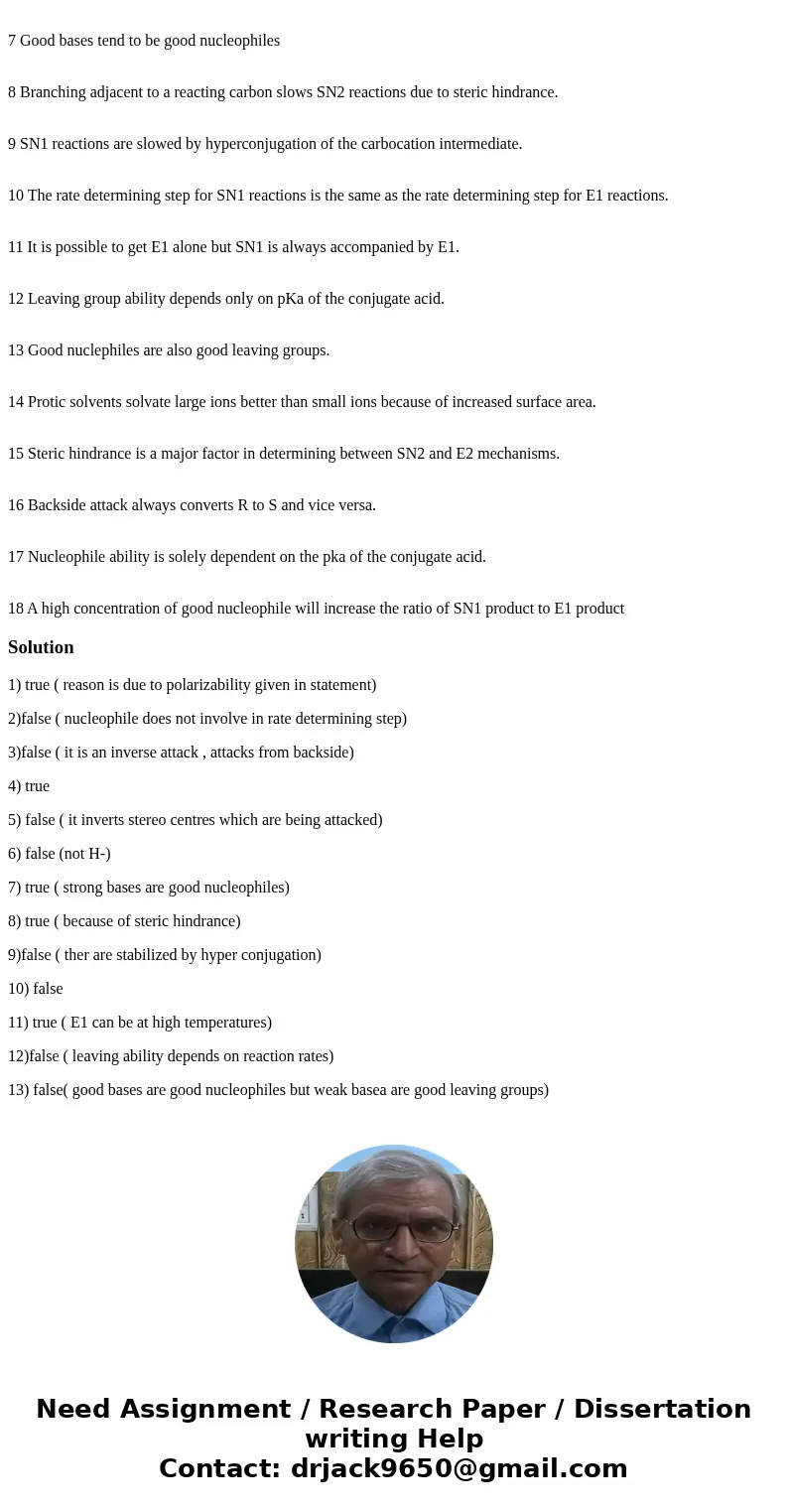Determine if each of the following statements is true or fal
Determine if each of the following statements is true or false
1 Larger atoms are better nucleophiles due to polarizability.
2 The identity of the nucleophile affects the rate of an SN1 reaction.
3 SN2 reactions proceed via frontside attack.
4 Bimolecular reactions tend to be stereoselective.
5 SN2 reactions invert all stereocenters in a haloalkane.
6 Cl-, OH-, and H- are good all leaving groups.
7 Good bases tend to be good nucleophiles
8 Branching adjacent to a reacting carbon slows SN2 reactions due to steric hindrance.
9 SN1 reactions are slowed by hyperconjugation of the carbocation intermediate.
10 The rate determining step for SN1 reactions is the same as the rate determining step for E1 reactions.
11 It is possible to get E1 alone but SN1 is always accompanied by E1.
12 Leaving group ability depends only on pKa of the conjugate acid.
13 Good nuclephiles are also good leaving groups.
14 Protic solvents solvate large ions better than small ions because of increased surface area.
15 Steric hindrance is a major factor in determining between SN2 and E2 mechanisms.
16 Backside attack always converts R to S and vice versa.
17 Nucleophile ability is solely dependent on the pka of the conjugate acid.
18 A high concentration of good nucleophile will increase the ratio of SN1 product to E1 product
Solution
1) true ( reason is due to polarizability given in statement)
2)false ( nucleophile does not involve in rate determining step)
3)false ( it is an inverse attack , attacks from backside)
4) true
5) false ( it inverts stereo centres which are being attacked)
6) false (not H-)
7) true ( strong bases are good nucleophiles)
8) true ( because of steric hindrance)
9)false ( ther are stabilized by hyper conjugation)
10) false
11) true ( E1 can be at high temperatures)
12)false ( leaving ability depends on reaction rates)
13) false( good bases are good nucleophiles but weak basea are good leaving groups)


 Homework Sourse
Homework Sourse